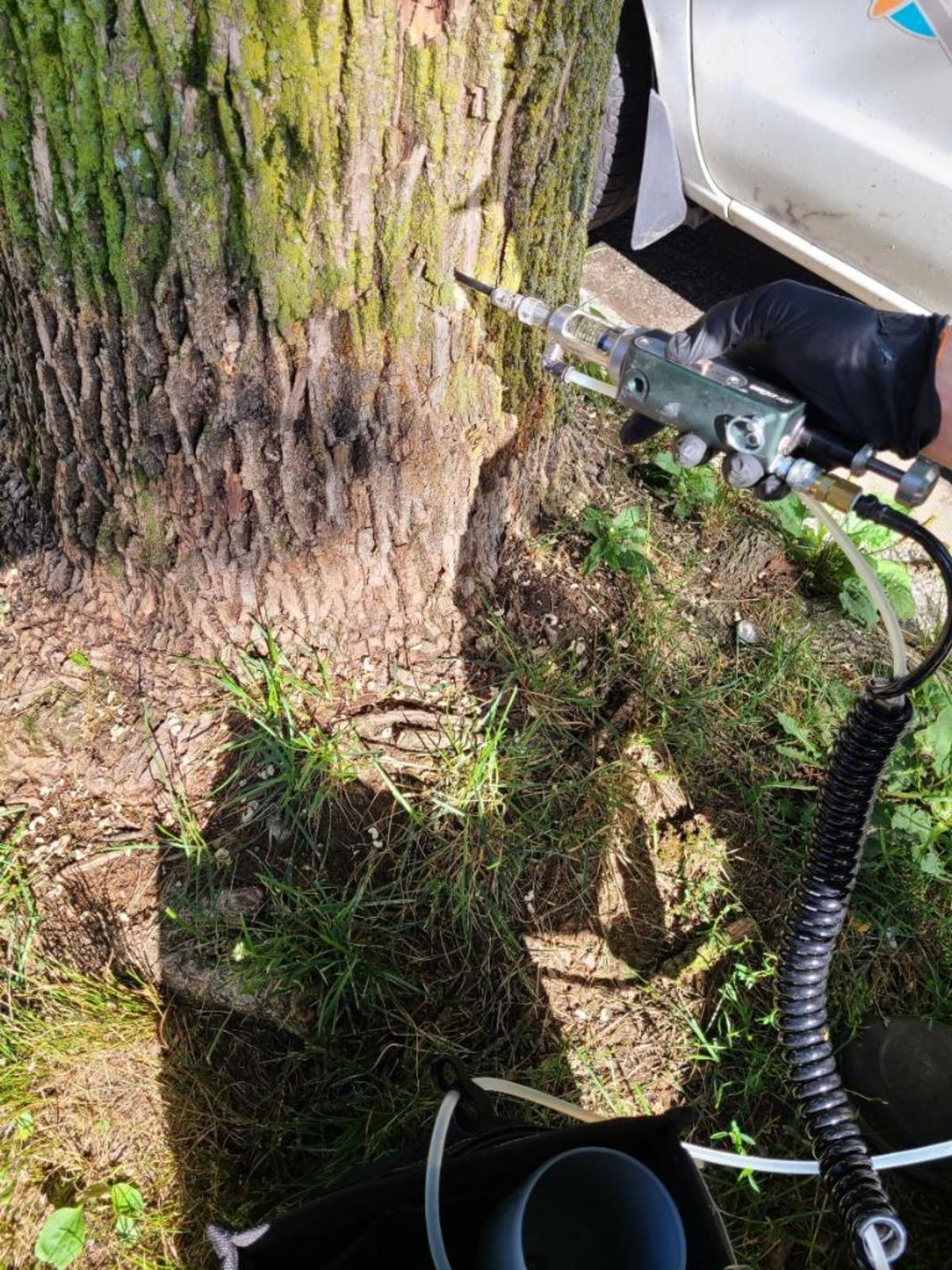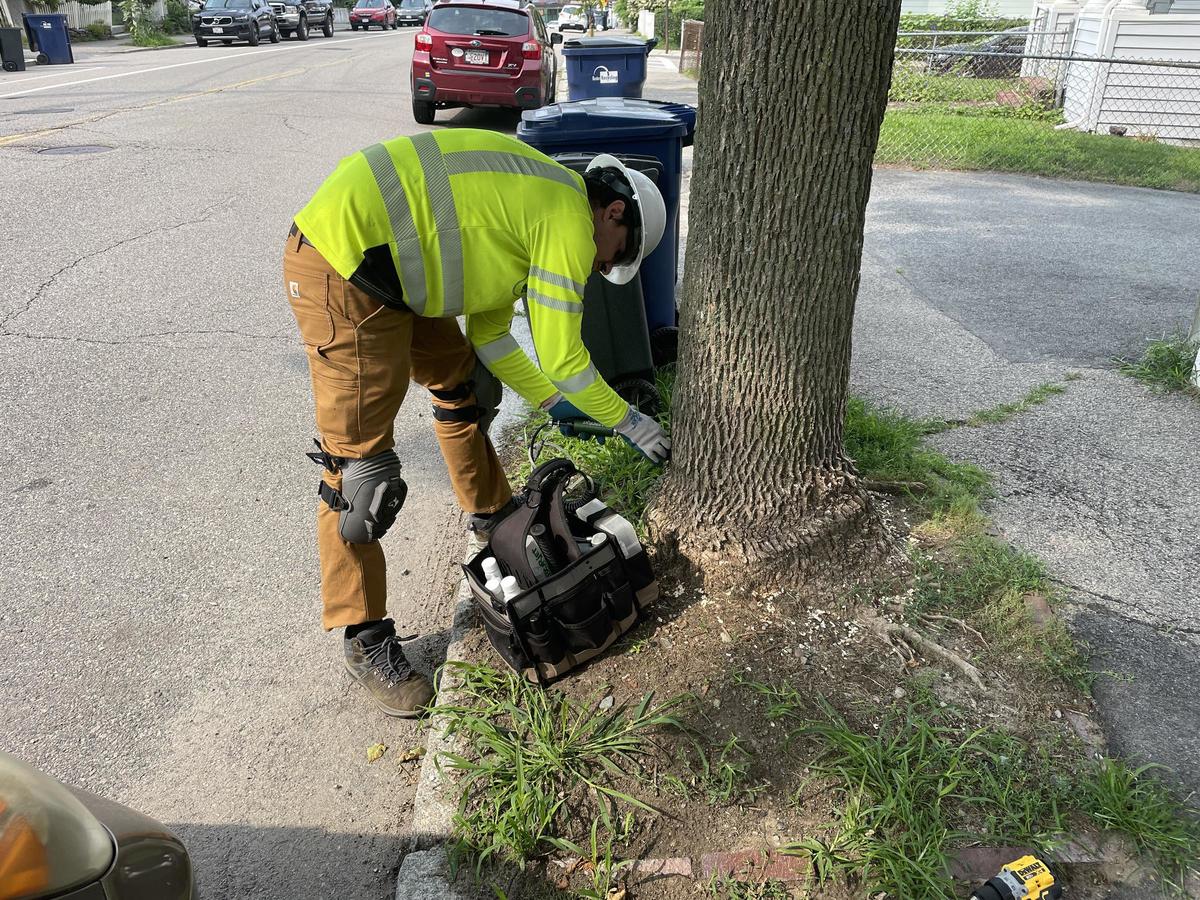Ash Trees Treated to Protect Against Emerald Ash Borer
The Urban Forestry Division has treated 1,165 ash trees to protect against the invasive insect this June.
One of the main goals of the Urban Forest Plan is to provide proactive care and preserve the existing tree canopy within the city. This means taking actions, where possible, when faced with invasive pests and diseases. The Emerald Ash Borer (EAB) beetle lays eggs on the bark of ash trees and upon hatching, the larvae burrow into the living tissue of the tree causing damage and eventually death. You can learn more about the EAB lifecycle from the Massachusetts Department of Conservation and Recreation.
The Urban Forestry Division has recently inspected all of the ash trees in the city’s tree inventory. Each tree was evaluated for the signs of EAB, and if present, to determine the extent of the damage. Trees that have been heavily compromised by the infestation and showing greater than 50% crown loss will need to be inspected for removal in the interest of public safety. Trees with a lesser degree of insect damage can be treated to help preserve the canopy throughout the city. This June, the Urban Forestry Division treated 1,165 mature ash trees to protect against the Emerald Ash Borer (EAB) beetle.
The treatment was done by licensed professionals using a high pressure injection into the trunk of the tree. Each tree was treated with emamectin benzoate which will move throughout the vascular system to target any EAB larvae that are present. The injection will provide protection for 2-3 years, at which time the trees will be re-evaluated and the process repeated.



